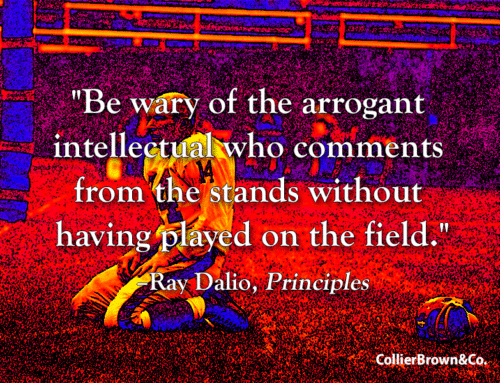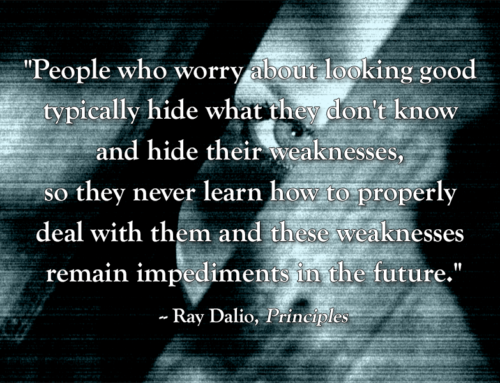In a subtropical forest in Africa a troop of gorillas is in the midst of their daily activities when a twig snaps in the brush. Immediately, all the other gorillas look to the “silverback” – the dominant male gorilla – for direction, protection, and order. They look to the leader for “the meaning” in the event. In fact, 80% of the time, group members have their eyes focused on the silverback looking for cues on what to do.
While we are not a troop of lowland gorillas, our leaders have a responsibility to create meaning. To clarify things. To establish a common understanding. If the silverback senses that the sound of the twig snap comes from a leopard that is stalking the troop, the silverback signals to circle up – youngest members in the middle. Thus, the leopard can’t pick off vulnerable members. This “common understanding” creates appropriate action, and survival for the troop.
The main problem with leadership communication is the illusion that it has taken place. According to writer and consultant, David Maiser, leaders make four fatal flaw assumptions in communication with constituents. That they:
- Understand what was communicated
- Agree with what was communicated
- Care about what was communicated
- Will take appropriate action
At the organizational level, clarity and common understanding begin with the vision (what we want to be) to inform the mission (what we do) to develop the strategic intent (how we will do it) to guide our actions (day-to-day decisions and activities). If there is no clarity at the beginning, what is the likelihood that day-to-day actions will be in alignment with and supportive of the vision of the organization?
Let’s get organizationally clear. What do you really want? Not what you think you want, not what will sound best for you to want, not what others want you to want – what do you really want?
Now, let’s check the organizational clarity of what you want:
- Can you explain it to a 12-year old?
- Can you draw me a picture (sketch, diagram, stick figure, map, or other) of it?
- Can you tell me a simple story that illustrates it?
You troop is watching and listening. Make it clear.
In Other Words…
“A thought transfixed me: for the first time in my life I saw the truth as it is set into song by so many poets, proclaimed as the final wisdom by so many thinkers. The truth — that love is the ultimate and the highest goal to which man can aspire. Then I grasped the meaning of the greatest secret that human poetry and human thought and belief have to impart: The salvation of man is through love and in love. I understood how a man who has nothing left in this world still may know bliss, be it only for a brief moment, in the contemplation of his beloved. In a position of utter desolation, when man cannot express himself in positive action, when his only achievement may consist in enduring his sufferings in the right way — an honorable way — in such a position man can, through loving contemplation of the image he carries of his beloved, achieve fulfillment. For the first time in my life I was able to understand the meaning of the words, ‘The angels are lost in perpetual contemplation of an infinite glory.’” Victor Frankel, Man’s Search for Meaning, 1946
“I’m not much of a partier anymore. I enjoy clarity much more.” – Sheryl Crow
“What will become compellingly important is absolute clarity of shared purpose and set of principles of conduct sort of institutional genetic code that every member of the organization understands in a common way, and with deep conviction.” – Dee Hock, founder and former CEO of the VISA credit card association
“The purpose of writing is to inflate weak ideas, obscure pure reasoning, and inhibit clarity. With a little practice, writing can be an intimidating and impenetrable fog!” – Bill Waterson
In The Word…
“Do you see a man who speaks in haste? There is more hope for a fool than for him.” – Proverbs 29:20






